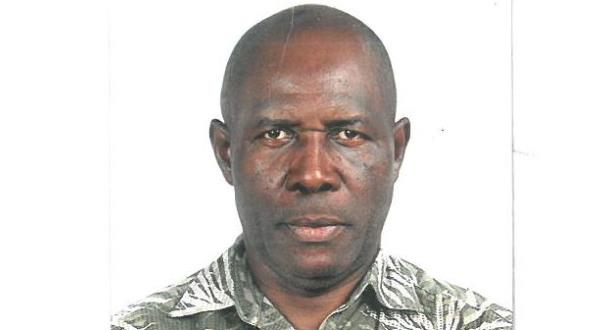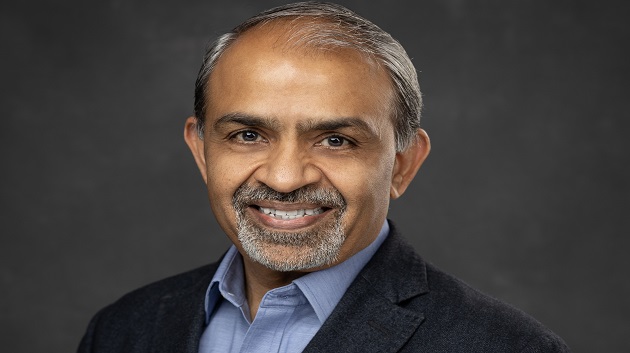Telecom
Current and New Dimensions for SATCOM Network Services Driving IoT & IoE for 5G

By Andrew Aroh
- Today Access to the Satellite resources is as simple as pointing the dish and transmitting/receiving: This is because Satellite Coverage is Ubiquitous, the bandwidth is instantly available and it can be directed /redirected without any last mile issues.

- Satellite communications enhances economic, educational and health standards more than any other form of technology. In turn, higher economic and social standards are attracting foreign investment, which creates employment opportunities which leads to increased exports, which yields stronger hard currency earnings.
- Increasingly, there is a recognition by regulators, operators and service providers that new job opportunities, foreign investment, and digital economic strength are counted among the many advantages of permitting the provision of effective broadband communications.
- In SATCOM digital realization, we are looking at payload with high-speed and low power characteristics, whilst having radiation hardness.
- The frequency spectrum for broadband (Ka-band/V-band) has higher power and therefore will be used for high-bandwidth interactive services such as high-speed internet, video conferencing and multimedia applications.
- Note that NGN is expected to integrate wired/cabled and wireless networks into an all-IP network. Based on the above, a rejoinder to WRC-19 has shown that the following characteristics are vital for essential communications operation of NGNs:
- Coverage
- Capacity/throughput
- Flexibility/scalability
- Interoperability
- Access & control
- Quality-of-service
- Protection/Security
- The required increases in spectrum will provide the following:
- Continuous connection
- Greater capacity
- More data
- More users
- Faster speed
- Faster response time (latency) for connections.
- 5G is accompanied with development of Architectures leveraging Network Function virtualization (NFV) and software defined networking (SDN) both at the core and edge of the network providing:
- Increased computing power
- Scalability
- Reduced operating cost
- Business models to enable differentiation
- 5G will push the boundaries of throughput and capacity further beyond that of 4G to enable newer types of applications and services in the domain of:
- Health
- Transport
- Entertainment
- Machine-to-machine communications
- Security etc.
- 5G is virtually instantaneous opening up a new world of connected applications/devices (IoTs) leading to a huge shift towards a landscape dominated by WIRELESS CONNECTIVITY
- ITU SATELLITE CORE DESIGN PRINCIPLES (Development philosophy) which drives innovation in ICT:
- Make it simple, efficient, scalable, work anyplace, anytime no matter what the connectivity requirements
- The Technology is developed to a universal set of requirements (outlined below) to enable service providers to meet any customer need no matter the application, bandwidth, or satellite network topology:
- Everything is integrated
- Efficiency rules
- Scalability pays
- Flexibility matters
- Intuitive management prevails
- How do you prorate a new ICT device/product:
- Allows customers to generate new revenues
- Enhance Network performance
- Reduce Operating Cost
- Can operate with multiple carriers of different bandwidths.
- A new dimension in efficient satellite network solution:
- Features:
- Multi-frequency TDMA (MF-TDMA)
- Full mesh, star or hybrid (virtual network)
- Bandwidth on demand through DAMA
- Based on IP suite for internet
- Delivers cost-effective VoIP, Data, Video, DVB/DVB-S/DNB-S2/Extension
- From 105Mbps to 50Mbps or more to the Gbps range
- Multimedia
- True Broadband Triple-play:
- The emerging true broadband services are a combination of:
- Voice (making calls)
- Data (social media; email, browsing)
- Video (news, sports, entertainment, TV and broadcast; training, movies.)
- Most of these streaming and file-transfer based services have converged towards IP. Through a multiservice platform the different service over IP can be combined either in the Hub or the remote into a single carrier for efficient transfer at optimal service availability over a combination of fiber + terrestrial wireless + space wireless using ochestrantion.
- For true broadband (broadband 2.0) experience over satellite, the satellite MODEMs and terminals in the network implement the most efficient technologies:
- Adaptive code modulation (ACM) in the forward link.
- Adaptive return technologies using automatic in-route-selection (AIS)
- Embedded IP traffic enhancement software (aka cross-layer-optimization) through
- TCP acceleration
- Pre-fetching
- Compression/decompression
- The emerging true broadband services are a combination of:
- SEAMLESS INTEGRATION TO CREATE TRANSPARENT LAN SERVICES (TLS)
- With convergance in ICT we need integrated BROADBAND ACCESS & NETWORK PLANNING which provides high-speed data service that allows for the inter connection of different LANs across an extended campus, metropolitan area or nation network.
- Using VLANs Gigobit range LAN interface (such as 11011000Mbps Ethernet), TLS provides a much simpler solution to the customer for connection of disperate sites than other forms of WAN, such as frame relay or ATM.
- We need products and solutions that enable:
- Information exchange
- Accelerate information flow
- Ensure information delivery
- To make data communications systems:
- Faster
- More reliable
- More interoperable
- Standards-Based Satellite & Terrestrial RF Network Gateway Applications include:
- IP-over-Satellite Links
- IP over tactical/terrestrial wireless links
- IP over wired/cabled terrestrial links
- End-to-end communications over wireless links, with mobile nodes implementing space communications protocol standards by extending TCP/IP to maximize throughput and link utilization in the lossy, high-latency, asymmetric bandwidth environment typical of space and tactical/terrestrial RF communications links.
- Seamless integration with existing IP and Satellite/wireless RF network infrastructure transparent to most network functions.
- Support for BGP routing protocol for integration with existing IP network infrastructure and migration to IPV6.
INTERNET OF THINGS:
- The Internet of Things (IoT) refers to machine-to-machine communications.
- The IoT continues to grow as devices proliferate.
- Cisco estimates that 50 billion devices will be connected to the internet by 2020 and those connections will communicate data to analyze, plan, manage and make intelligent decisions autonomously.
- Connected IoT device like UAS sensors will keep soldiers and commanders connected to data needed to respond to the ever-changing battle field.
- When combined with collaboration and analytics, IoT data becomes part of a broader IoE (Internet of Everything) environment that promises to create a real-time information advantage.
- As the multitude of CONNECTED SENSORS and DEVICES grows while at the same time video surveillance and applications leverage the internet, the importance of physical and network security becomes even more critical.
THE INTERNET OF EVERYTHING
- The internet of everything (IoE) is a catalyst to take IoT to the next level by combining people, processes and technology with connected devices, sensors and other machines. This integration of IoT with human communications collaboration and analytical elements enables real-time decision advantages.
- The opportunity with IoE comes from its ability to link components via intelligent, programmable network.
- IoT is a critical part of this evolution, in which physical objects like vehicles, weapons and unmanned vehicles are connected to secure networks to create information dominance.
- The IoE is serving as a catalyst to change the landscape of the IT industry while transforming how to leverage network-based solutions.
- For defense, IoE holds the power to connect the battlefield with the digital world in ways that promise to fundamentally change military operations.
- An integrated architecture for IoE creates interconnected physical and virtual environments that combine IoT devices with secure virtualization, mobility, unified communications and other advanced technologies.
- The proliferation of unstructured imager and video data from a variety of sensors is creating new:
- Capture
- Storage
- Computing
- Exploitation opportunities
- To accommodate an influx of new devices without sacrificing security, they must be managed as part of an integrated architecture for IoE.
- The framework should leverage commercial product to avoid unnecessary government-modified devices that are more expensive to field manage and support.
- Security measures will be critical for protecting data on classified networks.
- Architecture suited to support IoE will include:
- Compute
- Storage
- Virtualization assets in the data center
- Secure network fabric for connectivity
- Voice and video-enabled secure mobile infrastructure
- Battlefield sensors
- Virtualization combined with advanced security from the network to application levels are essential to allowing high secure access to sensitive and classified information on multiple networks while lowering the risk of vulnerabilities.
- When properly designed and deployed, IoE will help to realize the vision of net-centric warfare while proving technology advantage for our connected war fighters.
- INTERNET OF EVERYTHING COULD TRANSFORM THE BATTLEFIELD: EVERYTHING CONNECTED.
- Today’s military is adapting to asymmetrical warfare and an evolving real-time threat matrix that require new approaches to military operations.
- In the midst of a technological shift from the fixed location work models of the PC era to the mobile, social, virtual and collaborative models of today, information advantage has become more important than overwhelming force.
- To address those needs the military is taking a leap forward by adopting new technologies and incorporating them into existing environment – all without sacrificing security and the ability to manage complex systems.
- The integration of military technology also unification of computing, storage and networks with sensors, devices and collaborative application.
- Security concerns surrounding IoE will be particularly important for military operators connecting to classified networks. Hence, network-aware intelligence and end-to-end physical security for video and all networked sensors must be at the heart of any military IoE solution.
- Today’s missions require ongoing, untethered interactions between soldiers, decision makers, subject matter experts and machines.
- Unification of sensors, video, voice, data collaboration and secure mobile computing is delivering next-generation battlefield capabilities.
- The potential exists to combine IoE technologies with big data analytics, trusted multilevel security capabilities, software-defined networks and virtualization – aware network infrastructure to deliver an integrated architecture for the battlefield.
- THE PROMISE AND CHALLENGE OF THE NEW CENTURY HIGH OVERHEADS.
- Advanced Satellite systems make vital contributions every day to:
- Science
- Connecting citizens and business for Internet of Things (IoT) as well as Internet of Everything (IoE).
- Gathering weather data for aviation, weather forecasting & climate change.
- Sending navigational signals for tracking, monitoring & control.
- Mapping earth, the planets and deep space & sea for information and security
- Defense
- Etc
- Advanced Satellite systems make vital contributions every day to:
- CURRENT AND NEW GENERATION SATELLITE NETWORKING TECHNOLOGY INCLUDES:
- Data networking constellations using LEOs & MEOs.
- New Generation Commercial Satellites with onboard processing (OBP) systems.
- New Military Satellites, such as SBIRS
- Next Generation Smaller Terminals
- CONCLUDING REMARKS: MAJOR TECHNICAL TRENDS COMMON TO COMMERCIAL AND MILITARY USERS:
- More powerful satellites are emerging
- More bps per Hertz
- Larger antennas onboard the Satellites
- More power are produced from the satellites
- Use of Ka-band, V-band and mmW increases bandwidth availability for mass market broadband
- Adaptive coding and Modulation to get even more bps per hertz (most of the time!)
- Standards are reducing the size and cost of earth station baseband equipment
- Continued move towards use of IP networking over satellite.
- More powerful satellites are emerging
- Andrew Aroh is President of SSPI Nigeria
Telecom
WhatsApp to Start Showing more Adverts in Messaging App

WhatsApp is launching three new ad features in a global roll-out across the messaging app.

The Meta-owned platform said the new ads will not be shown in the same place as people’s private chats, nor will the contents of their messages – which are encrypted – be used to decide which ads to display.
WhatsApp will instead use the country, city and language of the user, as well as how they interact with other ads and which channels they follow, to drive suggested content.
But people who have chosen to link their WhatsApp account to Facebook or Instagram will see more personalised ads.
The new ad features will appear in a section called Updates, which is a separate tab at the bottom of the app.
WhatsApp claims to have 1.5 billion users globally.
Businesses with channels will be able to choose to promote ads in the Updates section to attract new followers, and also charge a subscription to access extra content.
WhatsApp will eventually take a 10% commission of that fee, and there may also be extra costs on top of that taken at the app store level depending on the size of the business.
Firms will also be able to advertise in the form of a status update, which looks similar to an Instagram story and will link through to start a chat if clicked on.
Social media expert Matt Navarra told reporter that Meta is “laying the foundation for WhatsApp to finally become a monetisable platform at scale”.
But “monetising the periphery” of WhatsApp, while keeping personal chats private, would not be without risk for the company, he added.
This could particularly be the case in markets like the UK and Europe, he said, where the app is viewed primarily as a messaging tool with less appetite for content feeds or adverts.
“Any perception that the app is becoming noisy or Facebook-ified will spark backlash,” he said.
How does WhatsApp make money?
‘Natural extension’
It’s no coincidence that the new features bring WhatsApp more in line with Meta’s other platforms Facebook and Instagram.
“Obviously there’s overlap,” said WhatsApp boss Will Cathcart.
“We have stories on Instagram and stories on WhatsApp, and we now have a way for businesses to promote themselves in both, and we think that’s a good thing.”
He said he believed the move was a “natural extension of messaging services” and not dissimilar to features of rival apps such as Snapchat and Telegram.
For Mr Navarra, it also reflects a wider shift in the social media landscape.
“The feed is dying, public sharing is down, people are retreating into DMs and Stories in small groups,” he said.
“Meta’s trying to turn WhatsApp into a platform without users realising it and if they move too fast or it starts to feel like another ad network, people might disengage or maybe worse, distrust the app.”
Telecom
Airtel Africa Reinforces Commitment to ESG Impact while Advancing Digital, Financial Inclusion Across 14 Markets

Airtel Africa, a provider of telecommunications and mobile money services across 14 African countries, has published its Sustainability Report 2025, reaffirming its corporate purpose of transforming lives by expanding access to essential digital services, supporting inclusive economic growth, and advancing environmental stewardship throughout its operations.

In 2024/25, Airtel Africa made significant progress in bridging the digital divide, advancing financial inclusion and supporting underserved communities through strategic investment in connectivity, people, and sustainable practices.
Airtel Africa’s chief executive officer Sunil Taldar said: “This year’s achievements, from connecting 2,176 schools through the UNICEF partnership to reaching 44.6 million Airtel Money customers with near-gender parity, prove that the power of technology is a catalyst for gender balance. At Airtel Africa, we believe to not only expanding networks but we’re also building bridges to education, financial security and sustainable growth for Africa’s next generation.”
Key ESG highlights:
- Providing underserved communities with access to reliable network and connectivity:
- 2% population coverage across 14 markets (up from 80.4% in 2023/24)
- 36,159 4G infrastructure sites, including more than 15,300 in rural areas.
- Continued investment of $670m in network expansion and modernisation to boost speed, coverage and capacity.
Airtel Africa is connecting the unconnected, giving millions access to voice, data and mobile money services – driving economic opportunity and enhancing access to essential services.
- Bridging the digital divide, driving financial inclusion and addressing gender inequality
- 4 million data customers (+14.1% vs 2023/24)
- 6 million Airtel Money customers (+17.3%), with 44.2% Airtel Money customers who are women (+6.2% vs 2023/24)
- 7 million Airtel Money agents in our distribution network (+23.4% vs 2023/24)
- 2% women in the workforce across the Group (up from 28.3% vs 2023/24)
Through inclusive digital services and affordable financial products, Airtel Africa is empowering individuals and communities, particularly women, to fully participate in the digital economy.
- Unlocking potential through education and employment opportunities
- 2,176 schools connected to the internet free of charge (up from 1,201 in 2023/24)
By providing free connectivity and online resources to schools, Airtel Africa is helping young people reach their full potential. A growing agent network also supports employment and entrepreneurship opportunities across its footprint.
- Minimising the impact of our operations on the environment
- 500 off-grid sites converted to on-grid power, reducing reliance on diesel generators.
- 93% of total waste recycled (+3% vs 2023/24)
Airtel Africa is committed to reducing the impact of its operations on the environment through investment in renewable energy solutions and responsible waste management.
The Sustainability Report 2025 adheres to the Global Reporting Initiative (GRI) and GSMA telecommunications industry standards.
Telecom
ALTON Clarifies on Migration to End-User Billing for USSD Services

The Association of Licensed Telecom Operators of Nigeria (ALTON) wishes to inform the public and all mobile subscribers that the migration to the End-User Billing (EUB) model for Unstructured Supplementary Service Data (USSD) services will take effect from Wednesday, 18th June 2025.

This transition marks a significant milestone in the evolution of Nigeria’s digital financial ecosystem and is being implemented per the Determination of USSD Pricing and Services issued by the Nigerian Communications Commission (NCC).
The Determination was developed in collaboration with the Central Bank of Nigeria (CBN) and other key stakeholders to ensure a sustainable, transparent, and customer-friendly framework for USSD service delivery.
USSD services play a vital role in expanding access to financial services, particularly for unbanked and underbanked populations. However, the previous corporate billing model—where banks were billed by telecom operators—led to prolonged disputes over unpaid charges, service interruptions, and uncertainty for customers.
To address these challenges, the NCC’s 2025 Determination introduced the End-User Billing model, which allows mobile network operators to charge customers directly for USSD sessions.
To achieve the implementation of the EUB model, the CBN and NCC have stipulated that only banks that meet certain regulatory and operational conditions are permitted to migrate. One of which is the notification to customers of the billing change in advance, and to ensure that customers are fully aware of the new airtime-based charges and how they will be applied.
Accordingly, under the new billing model, USSD charges will be deducted directly from the customer’s airtime balance, not from their bank account, and each USSD session will attract a charge of ₦6.98 per 120 seconds. To enjoy the service, customers will receive a prompt to opt in and approve the charge before any deduction is made, and there will be no double billing as billing will only occur for successful sessions via airtime deductions.
ALTON wishes to reiterate that this change does not affect the availability or functionality of USSD banking services, as customers can continue to use their bank’s USSD codes as usual, provided they have sufficient airtime.
To ensure a smooth transition, ALTON advises customers to follow these support guidelines:
–For access issues (e.g., inability to dial USSD codes), contact your mobile network operator.
– For transaction-related issues (e.g., failed transfers or service errors), contact your bank’s customer service.
– Both banks and mobile network operators are required to provide responsive support and mensure that customers can access and use USSD services without disruption.
Alternative digital banking channels such as mobile apps, internet banking, and ATMs remain fully operational and available for customer convenience.
ALTON reiterates its commitment to working closely with the NCC, CBN, financial institutions, and other stakeholders to ensure that this transition is seamless, equitable, and beneficial to all parties, especially the end users.
We remain dedicated to promoting transparency, operational efficiency, and consumer protection across Nigeria’s telecommunications and digital finance sectors.

 News2 days ago
News2 days agoWhy I am vying for AFRINIC board seat in 2025 election – Terry Edet

 Telecom1 day ago
Telecom1 day agoGSMA, Mobile Industry Call for Strengthened Action to Advance Child Online Protection in Africa

 E-Financial2 days ago
E-Financial2 days agoFidelity Bank ED, Kevin Ugwuoke takes over as President of Risk Managers Association

 Telecom2 days ago
Telecom2 days agoCrypto Exchange MEXC Rolls Out P2P Support for Naira, Birr, and Rupee

 News1 day ago
News1 day agoDigital Africa Global Consult, NDPC Partner on Ground-Breaking “Nigeria Data Challenge” Initiative

 General News1 day ago
General News1 day agoTD Africa, HP Strengthen Partnership to Advance Africa’s Tech Ecosystem

 General News2 days ago
General News2 days agoAirtel Concludes Nationwide Environment Week with Market Clean-Up by Employees

 General News2 days ago
General News2 days agoCourt Orders Lawyer to Produce “Bail-Jumping” Client in MTN Cyber Fraud Case




























